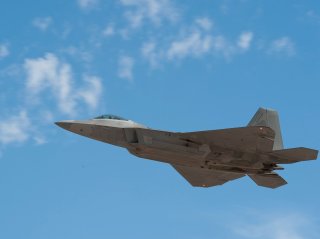America’s F-22 Raptor Versus Russia’s Su-57—Who’s Your Money On?
So who ends up on top if the two discrete aircraft end up neck and neck in a Within-Visual-Range (WVR) dance of death?
However, because the PAK-FA and Raptor are close enough in capability, a small number of T-50s will not suffice to radically challenge the Raptor’s reign—or even the F-35’s.
So why has the PAK-FA order been so radically downsized? It’s because it’s proving extremely difficult to deliver on all the design specifications, particularly the engines. The development costs keep on mounting, while the Russian economy has been in a recession for the last few years, decreasing the appetite for such an expensive offering.
This leads to another important caveat regarding the T-50: many of its capabilities are planned-for rather than extant. The AESA radar is still undergoing testing. The current crop of PAK FAs is equipped AL-41F1 turbofans which are fuel inefficient and produce insufficient thrust, so the plan is to replace them with superior Izdeliye 30 turbofans once they finish development—which may take as long as 2027.
In short, the PAK FA is a work in progress, its final capabilities unclear. And it’s very expensive work, leaving large question marks on how many will actually be produced.
This leads to another major issue: India, an investor in the PAK FA program, is complaining quite publically about cost and quality issues in the program; quality-control failings such as misaligned fittings may potentially increase the PAK FA’s radar cross-section. Indian FGFAs would potentially be more sophisticated than the Russian versions—but if India withdraws its order for over hundred aircraft, that project may prove even more difficult to finance.
Nonetheless, Russia’s defense policies and economic fortunes may well change in the future and additional orders will likely be forthcoming one day as more of the stealth fighter’s systems are refined. It’s hard to imagine the project ending with just twelve produced after so much money was put into it.
For the time being, however, the evidence suggests that only a small quantity of PAK FAs will enter Russian service this decade—too few to alter the balance of air power in the near term.
Verdict: As the quote goes, “Quantity has a quality all of its own.”
Sébastien Roblin holds a Master’s Degree in Conflict Resolution from Georgetown University and served as a university instructor for the Peace Corps in China. He has also worked in education, editing, and refugee resettlement in France and the United States. He currently writes on security and military history for War Is Boring.
This article is being republished due to reader interest.
Image: Flickr.

